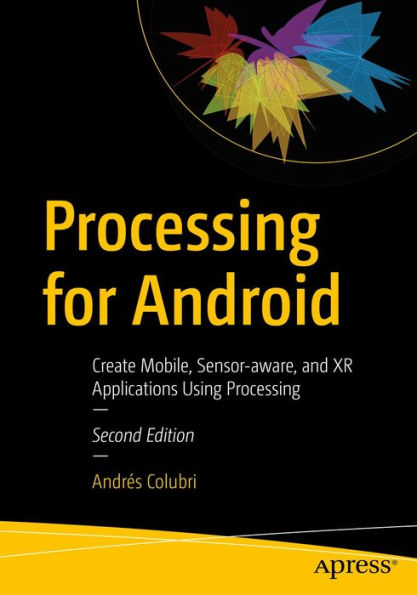Learn how to use the Processing programming language and environment to create Android applications with ease. This book covers the basics of the Processing language, allowing users to effectively program interactive graphics in 2D, 3D, and Extended Reality (XR). It also details the application of these techniques to different types of Android devices (smartphones, tablets, wearables, and smartwatches).
This updated edition walks you through the entire process of creating an app, from the initial idea to release of the final app via the Google Play App Store. Over the course of the book, you’ll learn to write engaging apps driven by user interaction and sensor data. A comprehensive series of hands-on projects, ranging from simple sketches to more complex projects involving shaders, VR, and AR will give you the firsthand experience you need to begin developing your own projects.
And once you have your Processing projects completed, you’ll be able to upload them to the Google Play store to be shared with the world!
What You Will Learn
- Write apps and live wallpapers for smartphones and tablets
- Design and implement interactive watch faces
- Create Extended Reality (VR/AR) experiences
- Incorporate GLSL shaders into your Processing apps
- Integrate Processing sketches into larger apps and Android Studio
- Learn how to write your own libraries to share with the community
- Export projects as completed apps ready to distribute through Google Play Store
Who This Book Is For
Artists, designers, students, researchers, and hobbyists who are not necessarily Android experts, but are looking to write mobile apps that make creative use of interactive graphics, sensor data, and extended reality.Learn how to use the Processing programming language and environment to create Android applications with ease. This book covers the basics of the Processing language, allowing users to effectively program interactive graphics in 2D, 3D, and Extended Reality (XR). It also details the application of these techniques to different types of Android devices (smartphones, tablets, wearables, and smartwatches).
This updated edition walks you through the entire process of creating an app, from the initial idea to release of the final app via the Google Play App Store. Over the course of the book, you’ll learn to write engaging apps driven by user interaction and sensor data. A comprehensive series of hands-on projects, ranging from simple sketches to more complex projects involving shaders, VR, and AR will give you the firsthand experience you need to begin developing your own projects.
And once you have your Processing projects completed, you’ll be able to upload them to the Google Play store to be shared with the world!
What You Will Learn
- Write apps and live wallpapers for smartphones and tablets
- Design and implement interactive watch faces
- Create Extended Reality (VR/AR) experiences
- Incorporate GLSL shaders into your Processing apps
- Integrate Processing sketches into larger apps and Android Studio
- Learn how to write your own libraries to share with the community
- Export projects as completed apps ready to distribute through Google Play Store
Who This Book Is For
Artists, designers, students, researchers, and hobbyists who are not necessarily Android experts, but are looking to write mobile apps that make creative use of interactive graphics, sensor data, and extended reality.
Processing for Android: Create Mobile, Sensor-aware, and XR Applications Using Processing

Processing for Android: Create Mobile, Sensor-aware, and XR Applications Using Processing
eBook (Second Edition)
Related collections and offers

